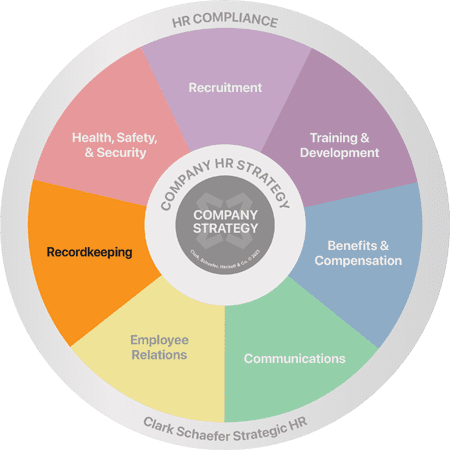Employee Files
Question:
I’m a new HR assistant in a company that hasn’t had an HR presence before. The secretary previously handled all of the personnel paperwork and the files are a mess. What’s the first thing I should do?
Answer:
Keeping employee files “clean” are a very important part of human resources. If you have inherited a mess we would recommend taking the time to review each file for completeness as well as ensuring all of the paperwork is in its appropriate place. The following is a guideline of documents that should be included in employment files as well as “where” they should be housed.
In general, a minimum of 2 files should be maintained for each employee. However, that number may increase based upon the number of actions for an employee. You will probably have an Employee Main File and an Employee Medical/Benefits File (i.e., benefit enrollment forms, profit sharing, 401(k), insurance claim forms, COBRA letter). In addition, separate files should be maintained for such documents as: Child Support Orders, EEO charges, Exit Interview, I-9 Forms, litigation documents, Workers Compensation claims, and Affirmative Action; however, a separate file isn’tnecessary for each employee.
Review your files and ensure the information is stored properly toavoid compliance concerns in the future.
What can go into the main personnel file?
• Application
• Offer Letter
• W-4 Form
• Nondisclosure Agreement
• Orientation and/or Termination Checklists
• Performance Appraisals
• Salary Information
• Official Performance Information (i.e., letters or memos)
• Payroll Data
• Tuition Reimbursement Information
• Copies of Credentials (i.e., certificates, license, diplomas)
• Sign off sheets / Policy acknowledgement forms
• Training information
What cannot go into a personnel file?
• Information related to medical, injuries, and disabilities
• Information disclosing affirmative action identification
• Applications that include non-job related information
• I-9 Form
• Subjective documentation and/or performance appraisals
What records can/cannot be kept together?
Typically, the following files are all kept separate:
• Employee File
• Employee Medical File
• Child Support
• EEO Charges
• Exit Interview Form
• I-9 Form
• Litigation Documents
• Workers Compensation Claims
• Affirmative Action
Recordkeeping can be a daunting task, especially once you get behind in filing. Keeping some documents accessible, but confidential is extremely important. Strategic HR has an easy to use desktop reference to assist with managing employee documentation and record retention. Visit our HR Store page to learn more about this handy tool.


